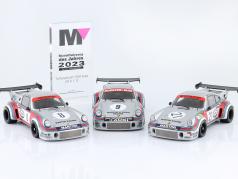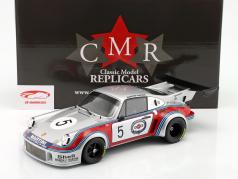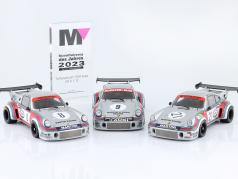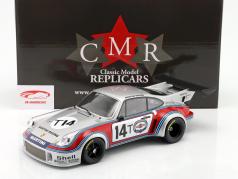At the beginning of the 1970s, Porsche decided against pursuing an expensive racing program due to financial reasons. The plan was that the team around Norbert Singer should run factory sports on a small scale with the Porsche 911. At that time, nobody at Porsche could have guessed that a little more than a year later they would compete in the 24-hour race in Le Mans in 1974 and achieve second place. In today's blog article, we are dedicated to three models in scale 1:12 that the label CMR has created exclusively for ck-modelcars and modelissimo. The models were made of high-quality resin and are in no way inferior to the level of detail of the original in the Martini Racing design. The vehicle in which Herbert Müller and Gijs van Lennep completed the training for the 1000 km race in Spa in 1974, as well as the car with which the two drivers finished 5th in the 1000 km race in Brands Hatch, can be ordered. The third car was used at the 750km in the same year on the Nürburgring. Müller and van Lennep took 6th place there with their Porsche. The scale 1:12 also provides us with a real eye-catcher. The models are an impressive 39cm long and 17cm wide. They are actually guaranteed a place of honor far away from the usual showcase.
After the decision was made at Porsche, as already mentioned, not to launch an expensive racing program, since this would require a prototype with a 3-liter engine, factory racing with the 911 was the only option. This initially included use in the one-make world championship and an engagement in the American Can-Am series. As a test, a European Rally Championship run in Corsica was on the program at the beginning. The event allowed the use of the not yet homologated vehicle and only took place on paved roads without gravel. Even if the use was crowned with little success, one could gather the first experiences with the car. On the way back, the Paul Richard track, opened two years earlier, was used to carry out the first real tests under racing conditions. The fenders of the RSR were already cut out there to accommodate the wide rear tires that are so characteristic today. In February 1973, the first long-distance use followed at the 24-hour race in Daytona. Since the RSR was still not homologated, Porsche started with the prototypes in Daytona. After a few failures of the favorite Matra, Porsche ended up with first and second place on the plus side. Both vehicles used were then overhauled in Weissach and prepared for the season in Europe.
While the Porsche, which has since been homologated, started in the GT-class in the first race of the 1974 season, it switched back to the prototype class in the second race. Spoiler and tire sizes were almost unlimited there and it was easier to test new add-on parts. As always, Le Mans was on the program at the end of the season. The Carrera RSR 2.1 Turbo was the first turbocharged racing car to compete in Le Mans. On the morning of the second day, Porsche was second behind Matra. But then the fifth gear broke on the car of Herbert Müller and Gijs van Lennep. Since one would have had to remove the entire engine to get to the gearbox, they drove on with four gears and hoped that the fragments in the gearbox would not cause any further damage. In the end, the car withstood the high loads and finished second overall after 24 hours. This was a huge success for the 911 and Porsche, which started as prototypes.
Gallery
プロダクト
 | Porsche 911 Carrera RSR Turbo #5 5位 1000km Brands Hatch 1974 Martini Racing 1:12 CMR | 167,16 € |
 | Porsche 911 Carrera RSR Turbo #14T Practice 1000km Spa 1974 Martini Racing 1:12 CMR | 167,16 € |





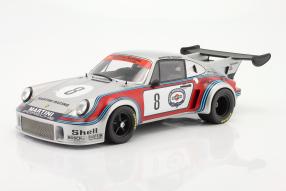
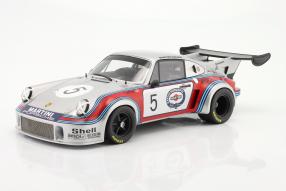
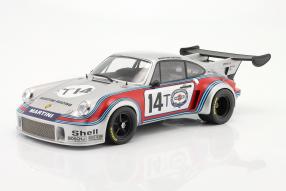
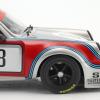
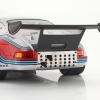
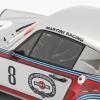
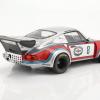
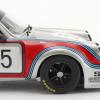
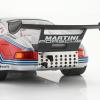
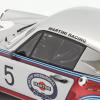
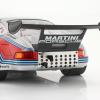
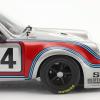
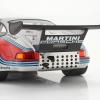
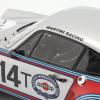
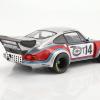
 [01.02.2023] Formula 1 2022: Five reasons why the season was very special
[01.02.2023] Formula 1 2022: Five reasons why the season was very special [26.01.2023] After 21 years as a safety car driver, Bernd Mayländer can now call himself an old stager
[26.01.2023] After 21 years as a safety car driver, Bernd Mayländer can now call himself an old stager